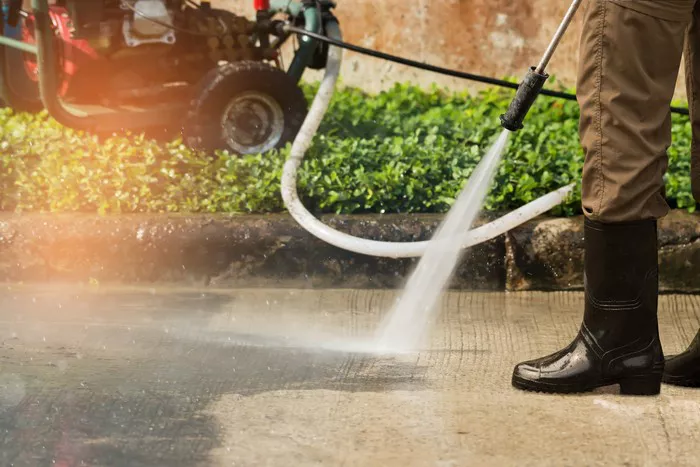Power washers, also known as pressure washers, are potent tools for cleaning various surfaces efficiently. Whether you’re sprucing up your deck, washing your car, or tackling tough outdoor stains, understanding how to use a power washer effectively is essential. In this guide, we’ll walk you through the process step by step, from setup to cleanup, ensuring you get the most out of your power washing experience.
Getting Started: Setting Up Your Power Washer
Before diving into the cleaning process, it’s crucial to set up your power washer correctly:
1. Selecting the Right Nozzle: Power washers come with different nozzles, each suited for specific tasks. Choose the appropriate nozzle based on the surface you’re cleaning and the level of pressure required.
2. Connecting the Hose: Attach the high-pressure hose to both the washer and the spray wand securely. Ensure there are no kinks or blockages in the hose that could disrupt water flow.
3. Adding Detergent (If Needed): Some cleaning tasks may require the use of detergent. If so, add the detergent to the designated reservoir on the power washer and attach the appropriate nozzle.
4. Powering On the Washer: Plug in the power washer and turn it on. Follow the manufacturer’s instructions for starting the machine safely.
Mastering the Technique: Using Your Power Washer
Now that your power washer is set up, it’s time to tackle the cleaning process:
1. Maintaining the Right Distance: Keep the spray wand at a consistent distance from the surface you’re cleaning, typically around 6 to 12 inches. Holding the wand too close can damage the surface, while holding it too far may reduce cleaning effectiveness.
2. Applying Even Pressure: Move the spray wand in a consistent and controlled manner, applying even pressure to ensure thorough cleaning. Avoid concentrating the spray in one area for too long, as it may cause damage.
3. Working in Sections: Divide the cleaning area into manageable sections and work systematically, moving from one section to the next. This approach ensures thorough cleaning without missing any spots.
4. Adjusting Pressure as Needed: Most power washers allow you to adjust the pressure settings. For delicate surfaces, such as wood or glass, use lower pressure to prevent damage. For tougher stains, increase the pressure as necessary.
Safety Precautions: Protecting Yourself and Your Surroundings
While power washers are effective cleaning tools, they can also pose safety risks if not used properly. Here are some essential safety precautions to keep in mind:
1. Wear Protective Gear: Always wear safety goggles to protect your eyes from debris and splashing water. Additionally, consider wearing sturdy shoes to prevent slipping and gloves to protect your hands.
2. Watch Your Surroundings: Be mindful of your surroundings while operating the power washer. Avoid spraying near electrical outlets, pets, or people, and be cautious of slippery surfaces.
3. Use Caution on Sensitive Surfaces: Certain surfaces, such as painted or delicate materials, require extra care. Test the pressure on a small, inconspicuous area before proceeding with full-scale cleaning.
4. Turn Off the Power Washer When Not in Use: When taking breaks or switching nozzles, always turn off the power washer to prevent accidental spraying.
Cleaning Up: Proper Maintenance and Storage
Once you’ve completed your cleaning tasks, it’s essential to properly maintain and store your power washer for future use:
1. Flush Out Detergent: If you used detergent during cleaning, flush out the detergent reservoir and hoses with clean water to prevent clogging and buildup.
2. Release Pressure: After turning off the power washer, release any remaining pressure by squeezing the trigger on the spray wand. This step ensures safe handling when disconnecting hoses.
3. Store Properly: Store your power washer in a clean, dry location away from extreme temperatures and direct sunlight. Coil the hoses neatly to prevent kinks and damage.
4. Perform Regular Maintenance: Follow the manufacturer’s guidelines for routine maintenance tasks, such as cleaning or replacing filters, checking for leaks, and lubricating moving parts.
Conclusion
Mastering the use of a power washer involves proper setup, technique, safety precautions, and maintenance. By following the steps outlined in this guide and adhering to safety guidelines, you can harness the full cleaning power of your power washer while protecting yourself and your surroundings. Happy cleaning!
FAQs
Q1. How often should I use a power washer?
A1: It depends on your cleaning needs and the surfaces you’re dealing with. Generally, power washing once or twice a year is sufficient for routine maintenance tasks. However, for heavily soiled areas or frequent use, you may need to power wash more frequently.
Q2. Can I use a power washer on my car?
A2: Yes, you can use a power washer to clean your car, but it’s essential to use the appropriate nozzle and pressure setting to avoid damaging the paint or trim. Opt for a wide-angle nozzle and low-pressure setting, and keep the wand at a safe distance from the car’s surface.
Q3. Is it necessary to use detergent with a power washer?
A3: While detergent can enhance cleaning effectiveness, it’s not always necessary. For basic cleaning tasks, water alone may suffice. However, for stubborn stains or heavily soiled surfaces, using a mild detergent specifically formulated for power washers can help loosen dirt and grime more effectively.

